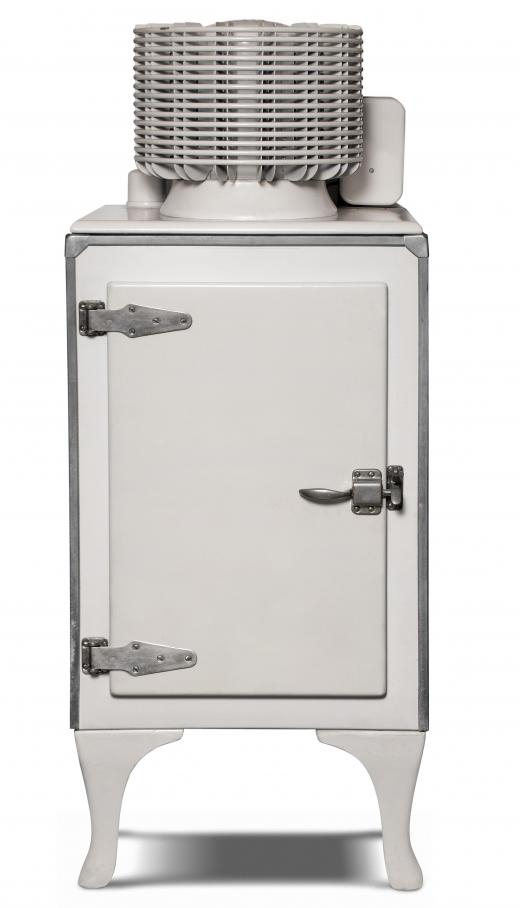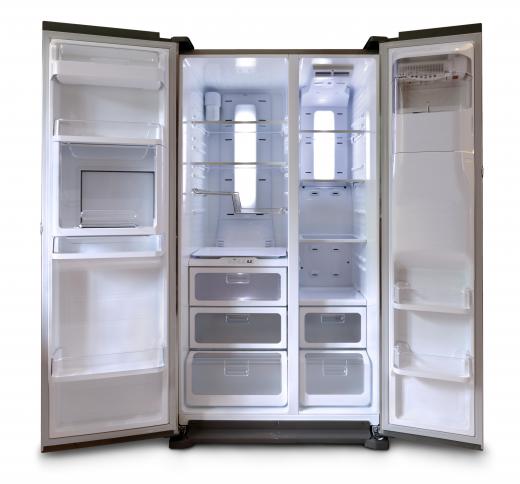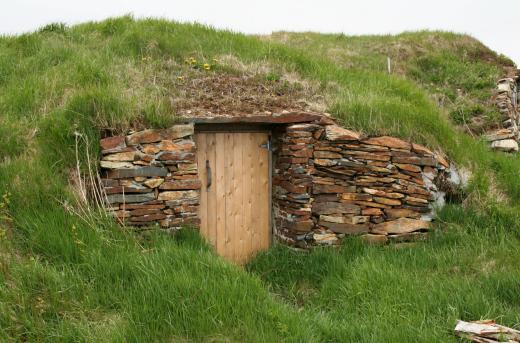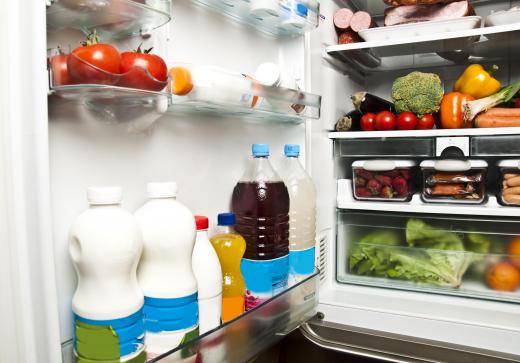Today in the US, about 99.5% of households contain a refrigerator. The idea of keeping foods cool to prevent spoilage is not a new one, but it may be surprising to understand that the appliance, a fixture in most homes, is relatively new to the world.
There were a number of ways to keep food cool in earlier times, and humans made use of a diverse number of natural surroundings. Placing food in cold streams, secreting it in the backs of caves, or digging underground to create cellars were all early methods of cooling foods. People also cut ice in the wintertime, and stored it in deep cellars or icehouses. Such ice could keep for a significant period of time, especially if it was covered in salt.

The first kitchen “appliance” that bears some resemblance to the refrigerator is the icebox. These were developed just before the 19th century. They were simply wooden boxes, often installed in a home, and sometimes lined with metal or other materials. People would purchase ice, place it in the box, and then store foods with it that needed to be kept cool. The ice would slowly melt, so most ice boxes featured drip pans, which could be removed and dumped.

Many studies on the aspects of refrigeration were developed before the icebox, but simply hadn’t been put into practice yet. Dr. William Cullen is often thought of as a pioneer in refrigeration technology since his scientific experiments in the early 18th century observed how liquids evaporated in a vacuum-like setting. Other scientists set out to study aspects of cooling and chemicals. Dr. John Goorie created an ice-making machine to help address the needs of patients with yellow fever, and Michael Faraday studied the properties of ammonia. Faraday realized ammonia had a cooling effect.

These early studies, and the ideas of many other scientists, led to the development of the first refrigerator in 1876 by the German engineer Carl von Linde. He had perfected a process by which large amounts of liquids could be converted into gas in order to keep a defined environment cool. Linde continued to perfect his invention, and others followed suit. By 1920, over 200 companies were manufacturing different models, and at this same time, many companies had developed technologies to produce them with combined freezers. They were still very much luxury appliances, and many people continued to use the old standby of the icebox instead.

Over the next decades, refrigeration technology improved but some of the chemicals used to create a cold environment caused problems. For instance, Freon® was frequently used to cool or freeze foods. While this may have been effective, it released chlorofluorocarbons (CFCs), which were later shown to be hazardous to the environment. Additionally, early appliances used a significantly higher amount of electric energy than their modern counterparts. Efforts on behalf on conservationists and environmentalists were eventually successful, and by the 1980s, most models ran on less power and did not use or release CFCs.

Along the way, other features were added to refrigerators, and automatic defrost capabilities and ice-making components were added bonuses. The cost also became more affordable for most families, though there are still luxury models that are well out the price range of the average middle class family. Basic fridges can now be purchased for about half their selling prices in the 1920s.
